White Balance and Mixed Lighting in Landscape Photography
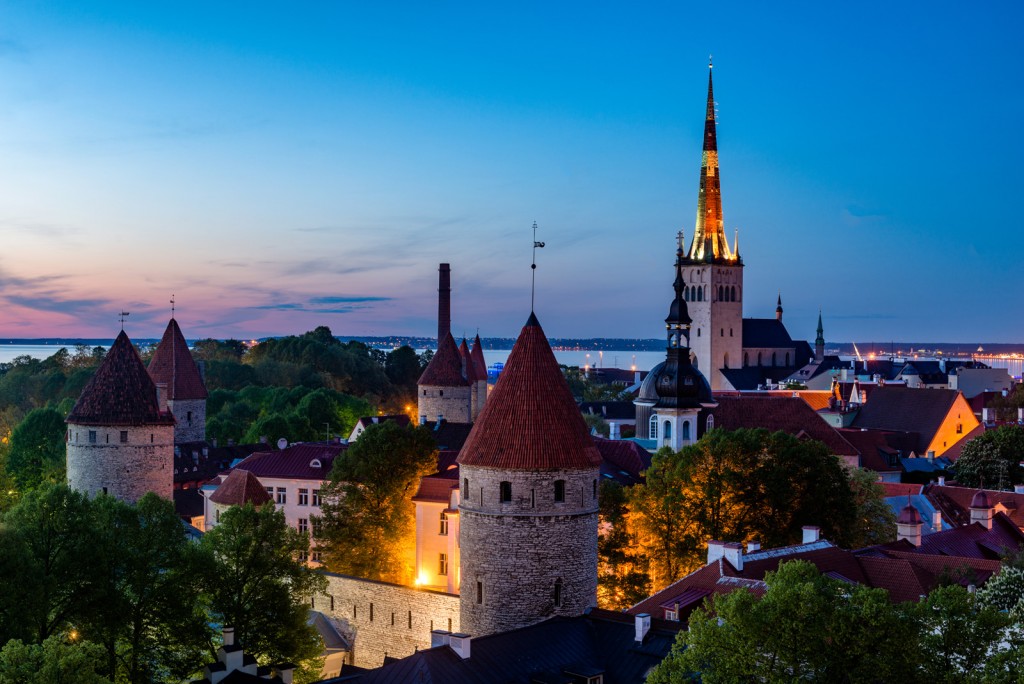 Fig 1 – The Old City of Tallinn, Estonia – this image is a manual blend of three different shots taken over a 90-minute period. Parts of the scene show light from golden hour, sunset and blue hour.
Fig 1 – The Old City of Tallinn, Estonia – this image is a manual blend of three different shots taken over a 90-minute period. Parts of the scene show light from golden hour, sunset and blue hour.
One thing that is drilled into our heads as photographers is that we need to get the correct white balance into our images. That is something that works quite well when there is a single, dominant light source. It can be more problematic in instances where there are a number of light sources with significantly different colour temperatures impacting the image. This is what we refer to as mixed lighting.
While mixed lighting can affect many aspects of photography, I am going to concentrate on landscape work. Mixed lighting can come about from both natural and artificial light sources and both can come into play, especially in urban landscapes. During daylight hours, the Sun is so dominant that it is effectively the only light source we tend to concern ourselves with, but during the transition from night to day and then from day to night, we get the challenges of working with these mixed light sources.
This lighting falls into three main categories:
- Magic hour or golden hour – which lasts for a period after sunrise and before sunset;
- Blue hour – which occurs just before sunrise and just after sunset; and
- Night – when the Sun has no impact on our image. Here artificial light sources, moonlight (which is just reflected Sunlight) and starlight are used in our images.
There are a number of tools that let one determine when these times occur. These can be found on the internet as web based applications as well as apps that can be downloaded onto smart phones and tables. Here are two that I use:
These times are affected by the distance we are from the equator as well as being seasonal. It should also be noted that while these apps are accurate, things like elevation, geography and topography also need to be considered while shooting. I remember arriving at site and setting up to shoot during the morning magic hour. Unfortunately, my subject was in a tree-lined valley and I didn’t get the light on my subject until almost 45 minutes after sunrise.
How people see versus what a camera records
The reason we need to understand mixed lighting is that the human visual system handles light quite differently from how our cameras do. Human vision is adaptive, which means that colours seem to look “right” to us because the brain starts adapting to new lighting conditions within a fraction of a second. What we see seems “normal” to us, almost instantly. This is of course one of the reasons we have trouble recognizing colour casts in images. The longer we stare at an image, the more “correct” the colours seem to be.
Our cameras, on the other hand record exactly what falls on the sensor. While, at least while shooting raw, can adjust the colour temperature / white balance of the image, we can only do so for a single colour temperature. This makes handling images with more than one colour temperature light source challenging, as we have to decide on which trade-offs to make to get an interesting image.
Shooting considerations
One other area of caution in doing this type of work is getting proper exposures using the camera’s built in light meter. The light meter normalizes everything to a “middle grey” value, which means that shots taken during periods of low light tend to be overexposed. Bracketing and using exposure compensation (in my experience, I find that EC settings in the -2/3 to -2 range often give me the best results). Shooting in manual mode is an alternative to using exposure compensation and give the same results.
While it is possible to turn up the ISO values, the downside is that this creates issues by introducing digital noise, reduces the camera’s dynamic range and colour depth in the image. If at all possible, I recommend using a sturdy tripod and some way of triggering the camera without using the shutter release button and having the ISO set at or close to the base value.
Your straight-out-of-camera (SOOC) shot may have extremely interesting colours or look quite ordinary and even boring, depending on what your white balance settings were. Shooting in RAW gives you a lot more flexibility when you get back to your favourite post-processing software.
When it comes to mixed lighting I would like to look at three main time periods:
1. Golden Hour or Magic Hour
 Fig 2 Golden hour – Almonte, Canada – here we see a scene taken shortly before sunset. The direct light from the sun gives areas hit by direct sunlight a golden glow, but areas in open shade reflect the blue colour of the sky.
Fig 2 Golden hour – Almonte, Canada – here we see a scene taken shortly before sunset. The direct light from the sun gives areas hit by direct sunlight a golden glow, but areas in open shade reflect the blue colour of the sky.
This is the time when both direct Sunlight and indirect Sunlight influence your composition. This lighting is considered to be the “best” lighting by many landscape photographers with soft, diffuse lighting and long soft shadow detail. This lighting occurs for a short period just after sunrise and just before sunset.
On a clear or mostly clear day, this means you have the sun passing through a thick layer of the earth’s atmosphere. The blue and violet end of the spectrum is scattered by the nitrogen and oxygen molecules in the atmosphere, which leaves the reds, yellows and oranges in the direction of the Sun. If we look towards the Sun, the direct Sunlight is scattered by pollution, dust particles and water vapour. Right at Sunrise and Sunset, the colour temperature of the direct Sunlight is going to be a bit below 2000K.
Those scattered blues and violets are what we see when we look up into the sky. Our eyes are particularly sensitive to the blue frequencies, so we tend to see these colours rather than the violets. This means we are looking at colour temperatures that can exceed the 15 000 K range.
This means that, depending in the specific lighting conditions you were shooting under, your image could be lit by light sources that have over a 10 000K difference in colour temperature! These are simply going to be so far apart that you can’t come up with a single “correct” white balance setting for the shot. Human vision, by the way, is more sensitive to differences in colour temperatures in the lower end of the range. You can probably make out a difference when the light source, say 2000K and 2500K, but probably won’t notice any difference between 8000K and 10 000K.
Sometimes people will include the Sun in their shots during this period and that introduces a series of issues that require additional care because there is a tendency to clip both highlights and shadow detail. Getting your exposure right is critical, as large areas that have blown out highlights or large areas of black that have no shadow details make for very uninteresting images. Specular highlights (small areas of reflected light that are blown out), and blown out bright lights are sometimes impossible to avoid. The same thing can be said about lost shadow details, and as long as these are small, we can usually get away with this. Regardless, minimizing these is definitely good photographic practice. Blown out areas cannot be recovered in post-processing!
Exposure blending or High Dynamic Range Images (HDRI) can be used to overcome these shots that have a dynamic range that exceeds the camera sensor’s capabilities. One can create some very intriguing images, but subtlety is the key, as going overboard tends to result in rather unattractive images.
Shooting in snowy conditions during golden hour can be rather challenging. Snow is white and is affected by the light that hits it, so in snow scenes we can have situations where we see warm colours from direct sunlight as well as cool blues in areas of open shadow where the snow picks up the blue from the sky above.
2. Blue Hour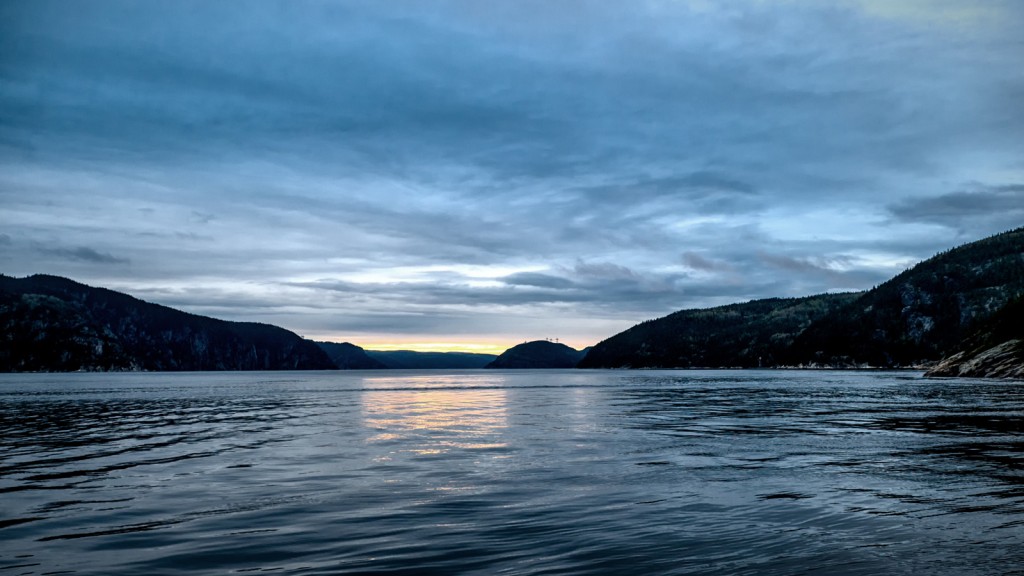 Fig 3 – The Saguenay Fjord, Canada – the sun is below the horizon, and blue colours dominate the scene.
Fig 3 – The Saguenay Fjord, Canada – the sun is below the horizon, and blue colours dominate the scene.
This occurs in the morning and evening as well, when the Sun is below the horizon, but the indirect scattered light from the Sun illuminates the scene. The reds, yellows and oranges are usually missing or are located right where the Sun has disappeared below the horizon. This light gives everything a blue look. Artificial lights can start acting as a significant secondary light sources during this period.
One issue to watch here is that our cameras can often appear to handle this lighting quite poorly. This is to a large extent related to the White Balance settings we have chosen, as the light will often have a much higher blue content than any of our white balance settings. Automatic white balance settings will attempt to neutralize this effect and often adding more blue in post-processing results in a more pleasing image.
Generally the camera will tend to overexpose these images, so if one is using one of the automatic exposure modes, exposure compensation may have to be applied. I find that settings around -1 are often enough.
3. Night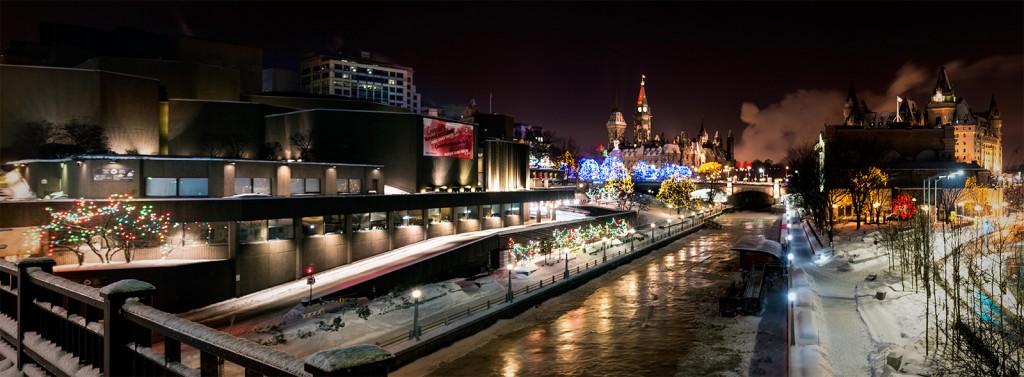 Fig 4 – Frozen Rideau Canal and downtown Ottawa, Canada at night. A wide range of color temperatures can be seen in this panoramic image.
Fig 4 – Frozen Rideau Canal and downtown Ottawa, Canada at night. A wide range of color temperatures can be seen in this panoramic image.
This is the period where the is no meaningful contribution from the sunlight, other than the light that might be reflected by the moon. In urban settings, this means the light we are using is 100% artificial light and we often get an interesting mix of light sources, with varying colour temperatures. Light sources vary from street lighting that could have a heavy yellow / orange cast that comes from low pressure sodium lights, a yellow cast from tungsten lighting, green lights from fluorescent lights and of course a whole litany of colours from LED or neon light sources.
One can introduce flash or light painting techniques during this period to create interesting images. Lights from moving traffic or long exposures can give you interesting results that cannot be captured at any other time of the day. Focusing on a point and zooming in or out can create some stunning photographic effects.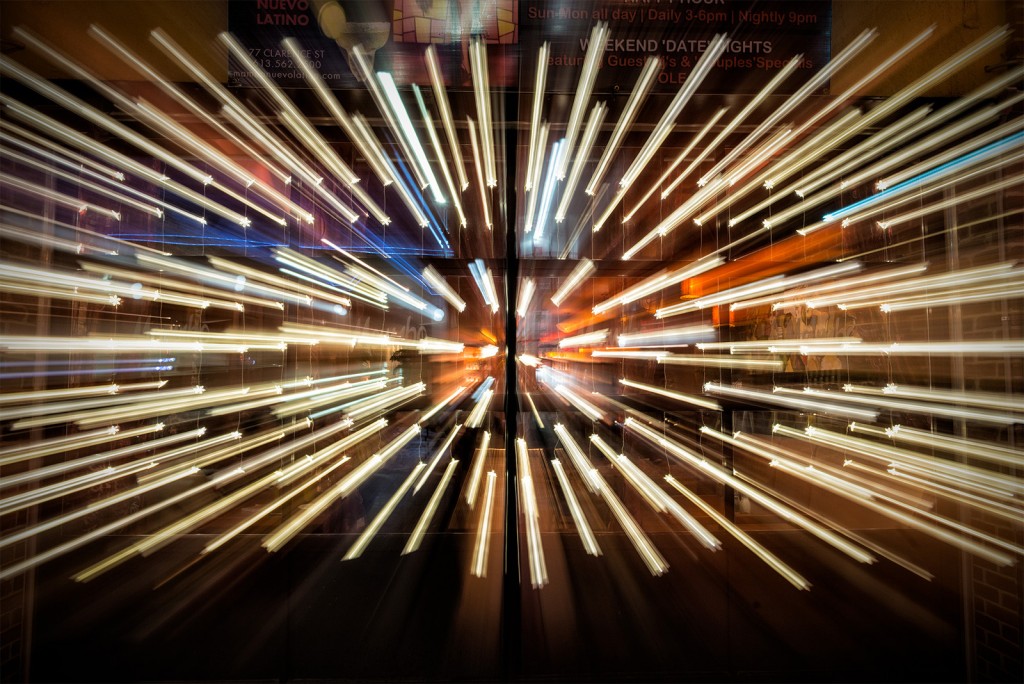 Fig 5 – a night time shot of some lights in a downtown Ottawa, Canada restaurant. The camera was on a tripod and while using a slow shutter speed, I turned the zoom ring on the camera to create this effect.
Fig 5 – a night time shot of some lights in a downtown Ottawa, Canada restaurant. The camera was on a tripod and while using a slow shutter speed, I turned the zoom ring on the camera to create this effect.
Time lapse shots of star fields are also a technique that can result in beautiful imagery, but one has to be far away from city lights and in areas of significant darkness to take these types of shots. I have no personal experience with this type of photography.
Just as in blue hour shots, the camera’s light meter will tend to overexpose these images, so depending on how the scene is lit, some negative exposure compensation may be required. Bright scenes may require none, while darker scenes may require significant negative exposure compensation. Trail and error / bracketing of these types of shots
Another common issue with night images is that chromatic noise may be an issue, especially in the dark areas of the image. Shooting at low ISO is usually a solution that works to minimize this issue. This suggests that a sturdy tripod can be a very useful tool when shooting at night.
Post Processing Considerations
There are a number of considerations that the photographer needs to consider when preparing these types of images for presentation. Perhaps the most important one is that, in spite of the lighting conditions, we still need to produce an image that people will want to look at. Often the lighting is a bit strange, so we need to craft something that does not scream “false” nor do we want strange colour casts that make the image look forced and unreal. A light touch and an understanding of what the typical colour temperatures that we see can help guide the creative approach. A heavy handed approach that results in overly saturated and “overcooked” look rarely works well
In some cases, a B&W conversion may make sense, but then the interesting colours are lost, however, that eliminates the need to worry about colour casts.
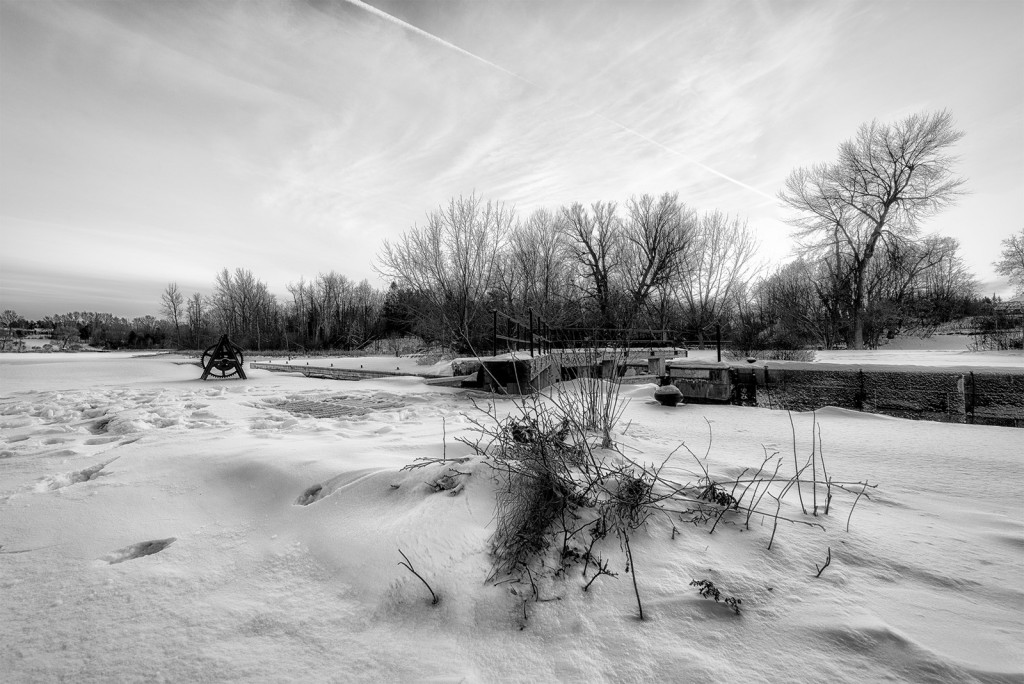 Fig 6 – This shot was taken right at sundown and the setting sun is right behind the trees. A B&W image take during these times can give nice results, but the strange colours seen at that time of day will be lost.
Fig 6 – This shot was taken right at sundown and the setting sun is right behind the trees. A B&W image take during these times can give nice results, but the strange colours seen at that time of day will be lost.
Post by: Manfred Mueller
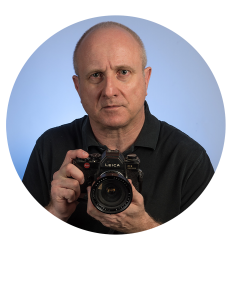
Manfred got his first camera as a child and by the time he was in his late teens, he was being mentored by a commercial photographer, so he was quite familiar with handling cameras as well as developing and printing in both B&W and colour in the wet darkroom. He also have quite a few professional level college courses on photography and videography under his belt.
With all that training and experience, one might think he was a career photographer, but he’s not. He’s strictly an amateur. From a career standpoint, he’s an engineer, so as one might imagine, he is extremely analytical and interested in the technical as well as the aesthetic sides of photography. He retired almost two years ago and have spent much of that time pursuing another one of his favourite activities, traveling around the world with his wife, photographing the people and places he sees along the way. He has been to well over 50 countries and have visited well known and sophisticated cities and some rather remote and primitive places on every continent except Antarctica.
When it comes to photography, he is interested in photographing most things, from formal studio work to shooting wildlife in some rather out of the way places. He is quite knowledgeable in the digital darkroom (He has been using Photoshop since 2003) and he is someone who still feels that the print is the ultimate output of an image, so he is an experienced digital printer as well.
And as you might have guessed, he is not Indian. He was born in Germany, but he lives in Ottawa, which is the capital city of Canada. In his own words, “It has the honour of being the second coldest capital city in the world (Ulan Bator in Mongolia is the coldest) and it is also one of the snowiest cities in Canada, receiving around 2.25 meters of snow every winter. I think you can guess at why I like traveling…”


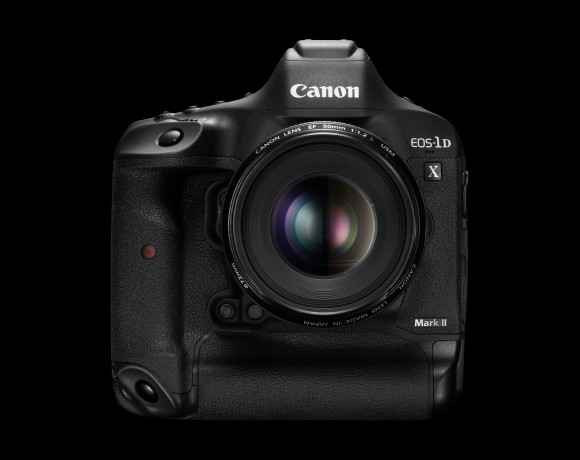

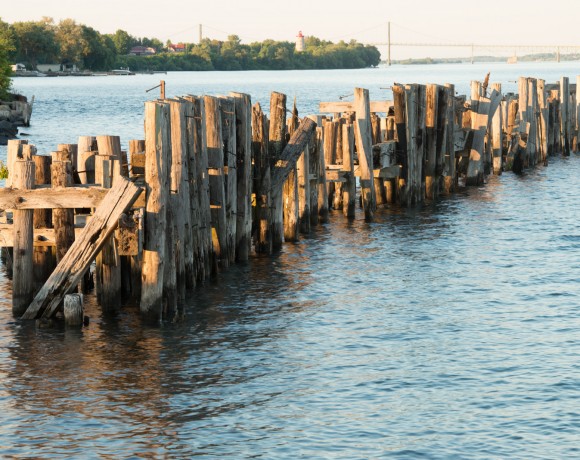
NO COMMENT